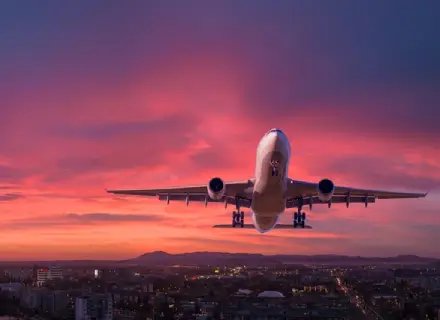Strong customer demand and limited capacity have reduced the need for airlines to lower fares to fill their aircraft, allowing them to exercise their pricing power. For carriers on both sides of the Atlantic, the outlook has improved due to rising fares. Major American airlines, such as United, Alaska, and Delta, have predicted record profits in 2025. It is anticipated that earnings at most European airlines will also increase.
In December 2024, US airfares increased at the fastest rate in 21 months compared to the same month in 2023, according to Department of Labour data. The travel research firm ForwardKeys reports that in 2024, airline ticket prices in Europe increased by 6% year-over-year.
In 2025, North American airlines’ net profit per passenger is expected to increase by roughly 15% annually, according to the International Air Transport Association. It is estimated that the net profit per passenger for European carriers will increase by 12% annually. Forced capacity discipline is reflected in rising fares, as the industry’s growth plans have been capped by a shortage of planes caused by production and engine delays.
Due to supply chain issues, Boeing and Airbus have been delivering aircraft slowly. Additionally, several aircraft have been grounded by airlines due to continuous inspections of RTX’s Pratt and Whitney GTF (geared turbofan) engines.
According to the travel data firm OAG, carriers in Europe have 10% of their fleet out of commission due to maintenance and repair problems. With roughly 17% of its fleet out of commission, Turkish Airlines has reduced its capacity by 19% in the current quarter compared to the same period last year, which has led to a 25% increase in average fares.
In January 2025, Ryanair revealed a higher-than-expected profit for the December quarter due to increased pricing power. Limited capacity in Europe may result in higher summer fares, according to CEO Michael O’Leary. Bernstein analysts predict that European carriers’ yearly capacity growth is significantly underestimating the growth in travel demand. They referred to it as “the most promising industry setup in many years.”
Regarding European airlines, these businesses are hoping for a better 2025 after 2024 was marred by spiralling costs and geopolitical instability.
John Grant, senior analyst at OAG, told Reuters that higher ticket prices would translate into improved results for most European airlines in the March 2025 quarter, which historically has been their weakest quarter.
“Most airlines have increased their average selling fares,” Grant said.
In the United States, airlines will be focusing on profitability rather than market share, as the trend has prompted carriers to aggressively reduce their growth plans. This marks a reversal from 2024, when an excess supply of seats in the price-sensitive end of the market sparked an airfare war, hurting earnings.
As a result, annual domestic seat growth this year is expected to be the slowest in at least a decade. United CEO Scott Kirby recently justified the strategic pullback in flying, stating that the path adopted by American carriers will persist for a long time.
“The industry is evolving into an equilibrium where each airline, driven by economic necessity, will be primarily focused on flying where they have a competitive advantage,” Kirby told investors.
American airline executives say households with earnings of $100,000 or more, which account for 75% of air travel spending, are doing well and continue to splurge on travel.
“People want to travel,” Alaska Air’s Chief Financial Officer, Shane Tackett, said in an interview with Reuters, while adding, “They are still prioritising experiences with their budgets.”
Higher ticket prices helped the six largest US airlines expand their margins on average by about 337 basis points in the December 2024 quarter.
The higher prices and increased profitability have led to a rally in American airline stocks. The NYSE Arca Airline index has gained 51% in the past six months, outpacing a 13% jump in the S&P 500 index. United Airlines’ stock has surged by about 155% during the same period.
However, this gain may be short-lived, given the aggressive tariff impositions by US President Donald Trump and the resulting trade wars worldwide, including in Europe. This could lead to further inflation (along with slow growth) on both sides of the Atlantic, forcing travellers to tighten their expenditures.


